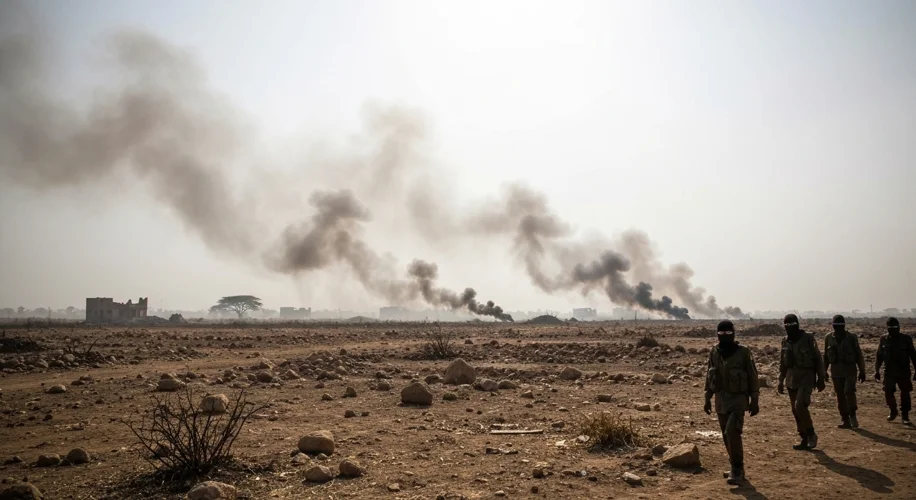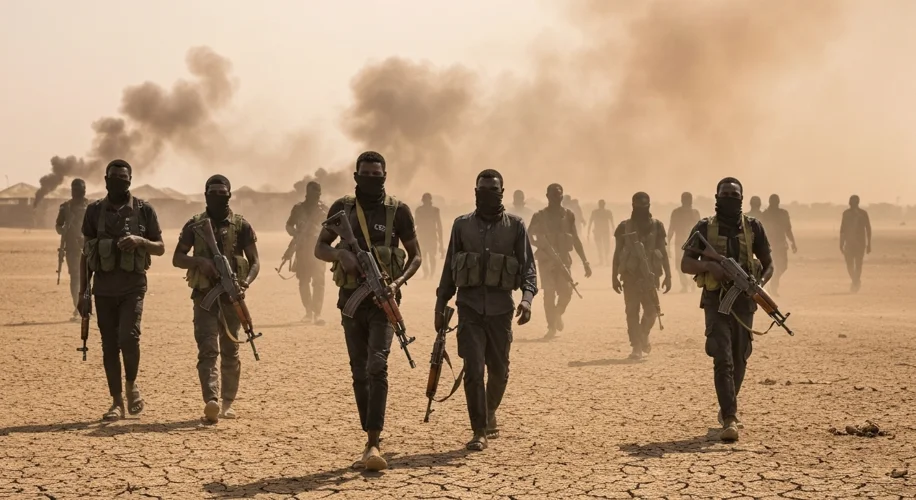In the vast, arid expanse of northeastern Nigeria, a shadow has fallen, one cast by an extremist group whose name, Boko Haram, translates ominously to “Western education is forbidden.” For over a decade, this militant organization has plunged the region into a vortex of violence, fear, and despair, leaving an indelible scar on the lives of millions. But how did this insidious insurgency take root, and what forces fuel its relentless grip?
The roots of Boko Haram’s brutal campaign are deeply entwined with the complex socio-economic and political landscape of northeastern Nigeria. For decades, this region, characterized by poverty, marginalization, and a lack of educational and economic opportunities, served as fertile ground for extremist ideologies. The historical neglect by successive governments, coupled with a perceived disconnect between the ruling elite and the predominantly Muslim population of the North, fostered a sense of deep-seated grievance.
The cultural context is crucial. While Islam is a dominant faith in the region, Boko Haram’s interpretation is a radical departure from mainstream Islamic practice. They advocate for a draconian, fundamentalist interpretation of Sharia law, seeking to establish an Islamic caliphate not just in Nigeria, but across the West African sub-region. This extremist agenda stands in stark contrast to the centuries-old Sufi traditions and moderate Islamic scholarship that have long defined the spiritual life of many communities in the North.
Emerging in 2009, Boko Haram, initially known as Jama’atu Ahlis Sunna Lidda’awati wal-Jihad (Group of the Sunnah for Preaching and Jihad), was founded by Mohammed Yusuf. Yusuf preached a fiery sermon against Western influence, particularly education, which he viewed as corrupting Islamic values. His charismatic leadership and potent anti-establishment rhetoric resonated with a disenfranchised youth, drawing them into his radical fold. After Yusuf’s death in a 2009 uprising and subsequent government crackdown, the group went underground, re-emerging under the leadership of Abubakar Shekau, a figure known for his brutal charisma and unwavering commitment to violence.

The insurgency itself has been a brutal and multifaceted conflict. Boko Haram’s tactics have been as varied as they are horrific. They have launched devastating attacks on schools, markets, and places of worship, their modus operandi including suicide bombings, mass kidnappings, and village raids. The most infamous of these atrocities was the 2014 abduction of over 270 schoolgirls from Chibok in Borno State, an act that sent shockwaves across the globe and became a symbol of the group’s depravity.
The group’s reach has extended beyond Nigeria, with affiliated branches and operations in neighboring countries like Cameroon, Chad, and Niger. These cross-border incursions have destabilized the entire region, creating a humanitarian crisis of immense proportions. Internally, the Nigerian military, despite receiving international support, has faced significant challenges in quelling the insurgency, grappling with issues of underfunding, corruption, and evolving extremist tactics.
The consequences of Boko Haram’s insurgency have been catastrophic. Millions have been displaced, living in precarious conditions in internally displaced persons (IDP) camps. Thousands have been killed, and countless others have suffered horrific abuses, including sexual violence, forced recruitment, and the destruction of their livelihoods. The educational system in the affected regions has been decimated, perpetuating the cycle of poverty and creating a generation adrift.
Furthermore, the insurgency has had a profound impact on regional security and stability. The widespread violence has hindered economic development, exacerbated food insecurity, and created a breeding ground for further radicalization. The international community has been forced to mobilize significant resources for humanitarian aid and military assistance, yet a lasting solution remains elusive.
The analysis of Boko Haram’s longevity is complex. While the group’s ideology provides a spiritual justification for its violence, the underlying drivers are deeply rooted in socio-economic deprivation, political exclusion, and the breakdown of traditional governance structures. External factors, such as the proliferation of small arms and the alleged support from external elements, have also played a role.
Understanding Boko Haram requires looking beyond simplistic narratives. It necessitates an examination of the historical grievances, the socio-economic disparities, and the complex interplay of local, regional, and international factors that have allowed this brutal insurgency to persist. The fight against Boko Haram is not just a military one; it is a battle for the hearts and minds of a disillusioned population, a struggle for education, opportunity, and a future free from the shadow of the Sharia.
The road to peace in northeastern Nigeria is long and arduous, fraught with the ghosts of past atrocities and the ever-present threat of renewed violence. Yet, the resilience of the Nigerian people, coupled with sustained international commitment to development, education, and good governance, offers a flicker of hope against the encroaching darkness.

